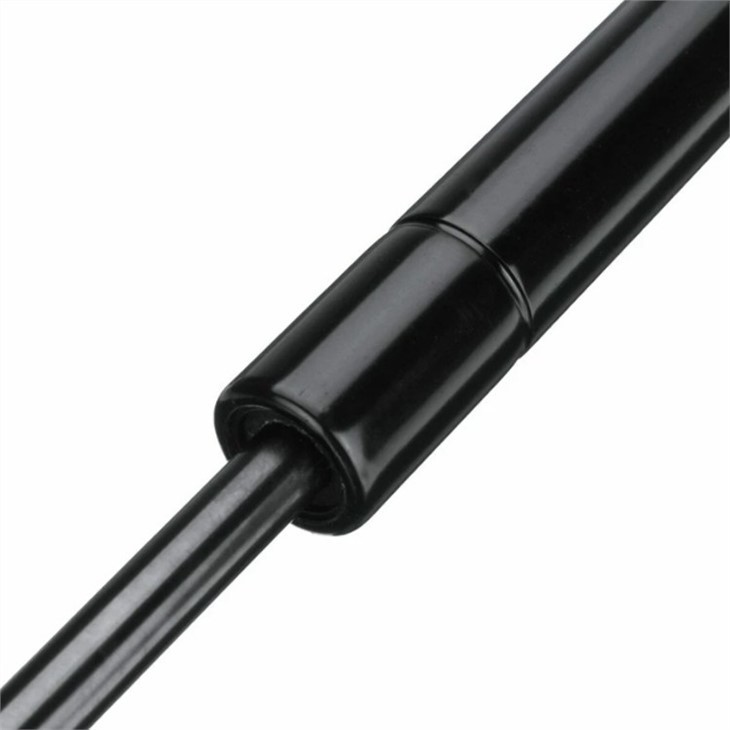Troubleshooting a gas lift in furniture that isn't working properly can be a daunting task, but with the right knowledge and approach, it can be resolved efficiently. As a supplier of Gas Lift for Furniture, I've encountered numerous issues related to gas lifts over the years. In this blog, I'll share some insights on how to troubleshoot a malfunctioning gas lift in your furniture.
Understanding the Basics of Gas Lifts
Before diving into troubleshooting, it's essential to understand how gas lifts work. Gas lifts, also known as gas springs or gas struts, are mechanical devices that use compressed gas to provide support and movement. They are commonly used in various types of furniture, such as office chairs, storage beds, kitchen cabinets, and car bonnets.
The basic components of a gas lift include a cylinder, a piston rod, and a valve. The cylinder is filled with compressed gas, usually nitrogen, which creates pressure. When the piston rod is pushed or pulled, the gas inside the cylinder is compressed or expanded, allowing the gas lift to support weight and provide smooth movement.
Common Issues with Gas Lifts
There are several common issues that can cause a gas lift in furniture to malfunction. Here are some of the most frequent problems and their possible causes:
1. Gas Leakage
Gas leakage is one of the most common issues with gas lifts. Over time, the seals in the gas lift can wear out or become damaged, allowing the compressed gas to escape. This can result in a loss of pressure, causing the gas lift to lose its ability to support weight or provide smooth movement.
Symptoms:
- The furniture may sink or collapse slowly over time.
- The gas lift may make a hissing sound, indicating gas leakage.
- The movement of the furniture may become jerky or uneven.
Possible Causes:
- Wear and tear of the seals due to regular use.
- Damage to the seals during installation or handling.
- Exposure to extreme temperatures or chemicals.
2. Overloading
Gas lifts are designed to support a specific weight capacity. If the furniture is overloaded, the gas lift may not be able to handle the additional weight, causing it to malfunction.
Symptoms:
- The furniture may not be able to lift or support the intended weight.
- The gas lift may compress or extend more slowly than usual.
- The gas lift may make a loud noise when under load.
Possible Causes:
- Placing too much weight on the furniture.
- Using the furniture in a way that exceeds its designed weight capacity.
3. Misalignment
If the gas lift is not installed correctly or becomes misaligned over time, it may not function properly. Misalignment can cause the piston rod to rub against the cylinder, resulting in increased friction and wear.
Symptoms:
- The movement of the furniture may be restricted or difficult.
- The gas lift may make a scraping or grinding sound.
- The furniture may not open or close smoothly.
Possible Causes:
- Incorrect installation of the gas lift.
- Loose or damaged mounting brackets.
- Impact or vibration that causes the gas lift to shift out of position.
4. Valve Malfunction
The valve in the gas lift controls the flow of gas and the movement of the piston rod. If the valve malfunctions, it can affect the performance of the gas lift.
Symptoms:
- The gas lift may not extend or retract properly.
- The movement of the furniture may be erratic or unpredictable.
- The gas lift may get stuck in a certain position.
Possible Causes:
- Dirt or debris clogging the valve.
- Damage to the valve due to wear and tear or impact.
- Incorrect adjustment of the valve.
Troubleshooting Steps
Now that we've identified some of the common issues with gas lifts, let's look at the steps you can take to troubleshoot a malfunctioning gas lift in your furniture.
1. Inspect the Gas Lift
The first step in troubleshooting is to visually inspect the gas lift for any signs of damage or wear. Look for cracks, dents, or leaks in the cylinder and piston rod. Check the seals for any signs of damage or deterioration. If you notice any issues, the gas lift may need to be replaced.
2. Check for Gas Leakage
To check for gas leakage, listen for a hissing sound near the gas lift. You can also apply a soapy water solution to the seals and connections of the gas lift. If there are any leaks, you will see bubbles forming. If you detect a gas leak, the gas lift should be replaced immediately.
3. Verify the Weight Capacity
Make sure that the furniture is not overloaded. Check the weight capacity of the gas lift and compare it to the weight of the furniture and any items placed on it. If the furniture is overloaded, remove some of the weight or consider using a gas lift with a higher weight capacity.
4. Check the Alignment
Inspect the mounting brackets and connections of the gas lift to ensure that they are secure and properly aligned. If the gas lift is misaligned, adjust the mounting brackets or reposition the gas lift to ensure proper alignment. Make sure that the piston rod moves freely without any obstruction.
5. Clean the Valve
If the gas lift is not functioning properly due to a clogged valve, you can try cleaning the valve. Use a clean cloth or a soft brush to remove any dirt or debris from the valve. You can also use a mild detergent or solvent to clean the valve, but make sure to rinse it thoroughly with water and dry it completely before reinstalling it.


6. Adjust the Valve
Some gas lifts have adjustable valves that allow you to control the speed and force of the movement. If the gas lift is moving too slowly or too quickly, you can try adjusting the valve. Refer to the manufacturer's instructions for the correct procedure for adjusting the valve.
When to Replace the Gas Lift
In some cases, troubleshooting may not be enough to fix a malfunctioning gas lift. If you have tried all the troubleshooting steps and the gas lift still does not work properly, it may be time to replace the gas lift. Here are some signs that indicate it's time to replace the gas lift:
- The gas lift is leaking gas and cannot be repaired.
- The gas lift is severely damaged or worn out.
- The gas lift no longer provides the necessary support or movement.
- The gas lift has reached the end of its lifespan.
As a Gas Lift for Furniture supplier, we offer a wide range of high-quality gas lifts for various types of furniture. Whether you need a Gas Spring for Storage Bed, a Kitchen Cabinet Gas Spring, or Bonnet Gas Struts, we have the right solution for you.
If you are experiencing issues with your gas lift or need to replace it, please feel free to contact us. Our team of experts can provide you with professional advice and assistance in selecting the right gas lift for your furniture. We also offer competitive prices and fast delivery to ensure that you get the products you need in a timely manner.
Conclusion
Troubleshooting a gas lift in furniture that is not working properly requires a systematic approach. By understanding the basic principles of gas lifts, identifying common issues, and following the troubleshooting steps outlined in this blog, you can often resolve the problem without having to replace the gas lift. However, if all else fails, don't hesitate to contact us for a replacement. We are committed to providing our customers with high-quality gas lifts and excellent customer service.
References
- Manufacturer's manuals and technical documents for gas lifts.
- Industry standards and best practices for gas lift installation and maintenance.





